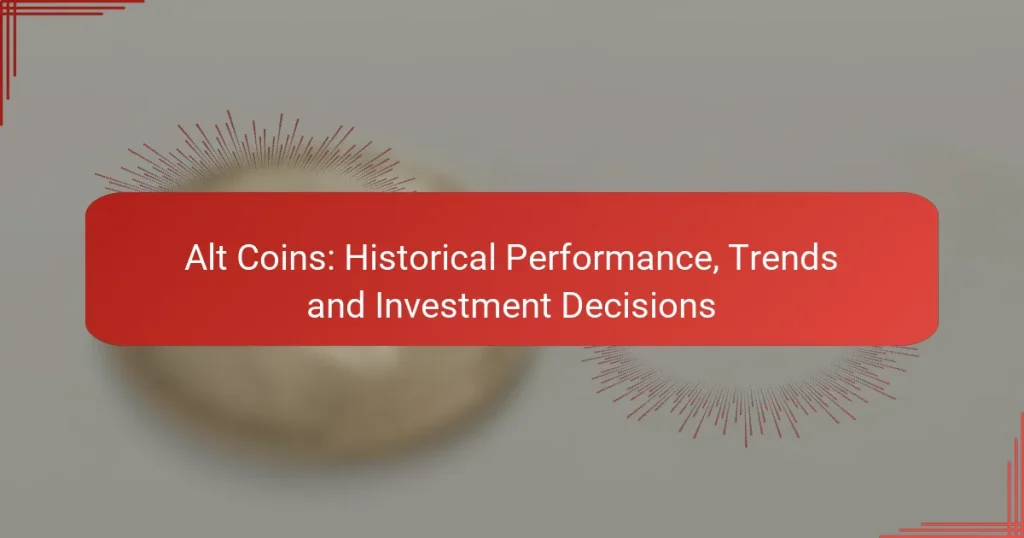Altcoins, including prominent players like Ethereum, Cardano, and Solana, have showcased remarkable price movements and investor interest in 2023. Their historical performance is marked by volatility, with some achieving significant gains while others have struggled. To navigate this dynamic market, investors must consider factors such as market sentiment, technological advancements, and regulatory influences that shape investment decisions.
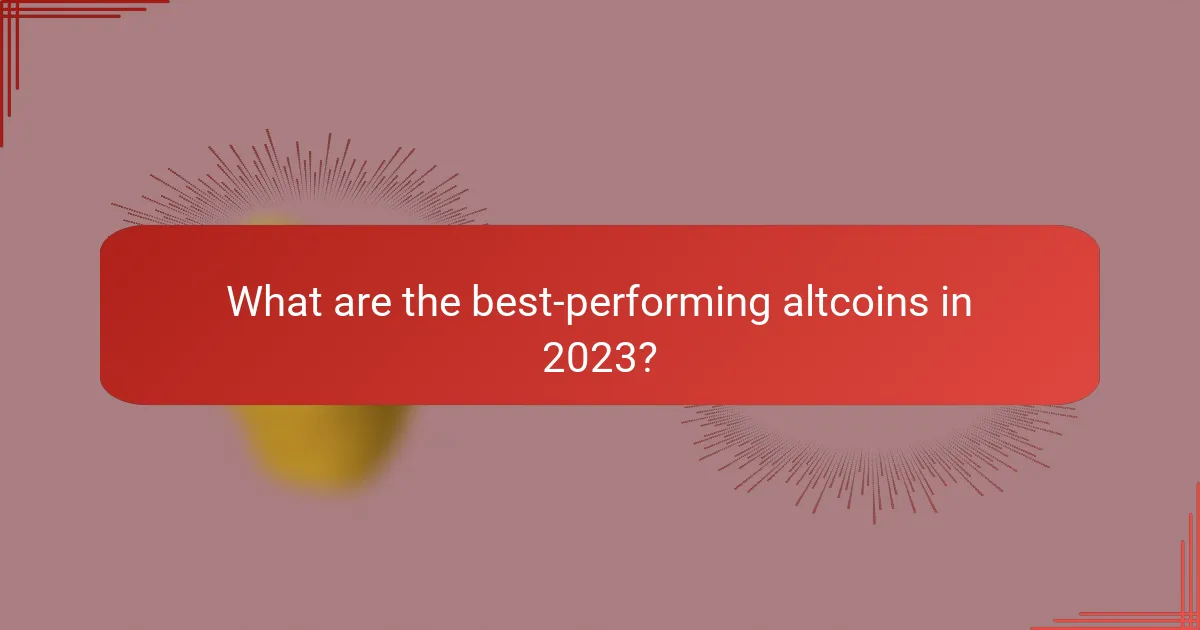
What are the best-performing altcoins in 2023?
In 2023, the best-performing altcoins include Ethereum (ETH), Cardano (ADA), and Solana (SOL), each demonstrating significant price movements and investor interest. These cryptocurrencies have shown resilience and growth potential, making them key players in the altcoin market this year.
Ethereum (ETH) performance metrics
Ethereum has consistently been a leader among altcoins, with its performance metrics reflecting strong adoption and network activity. In 2023, ETH has seen price increases ranging from 30% to 50%, driven by developments in decentralized finance (DeFi) and non-fungible tokens (NFTs).
Key performance indicators include transaction volume, which has remained robust, and the number of active addresses, indicating a growing user base. Investors should monitor these metrics, as they can signal potential price movements.
Cardano (ADA) investment trends
Cardano has attracted attention in 2023 due to its focus on sustainability and scalability, appealing to environmentally conscious investors. Investment trends show a steady increase in ADA holdings, with many investors viewing it as a long-term asset.
Recent partnerships and developments in smart contract capabilities have further fueled interest. Investors should consider the project’s roadmap and community engagement when evaluating Cardano’s potential.
Solana (SOL) market analysis
Solana has emerged as a strong contender in the altcoin space, with its market analysis indicating rapid growth and high transaction speeds. In 2023, SOL has experienced price fluctuations, often correlating with broader market trends and investor sentiment.
Its unique proof-of-history consensus mechanism allows for low transaction costs and high throughput, making it attractive for developers. Investors should keep an eye on market trends and technological advancements to make informed decisions regarding Solana.
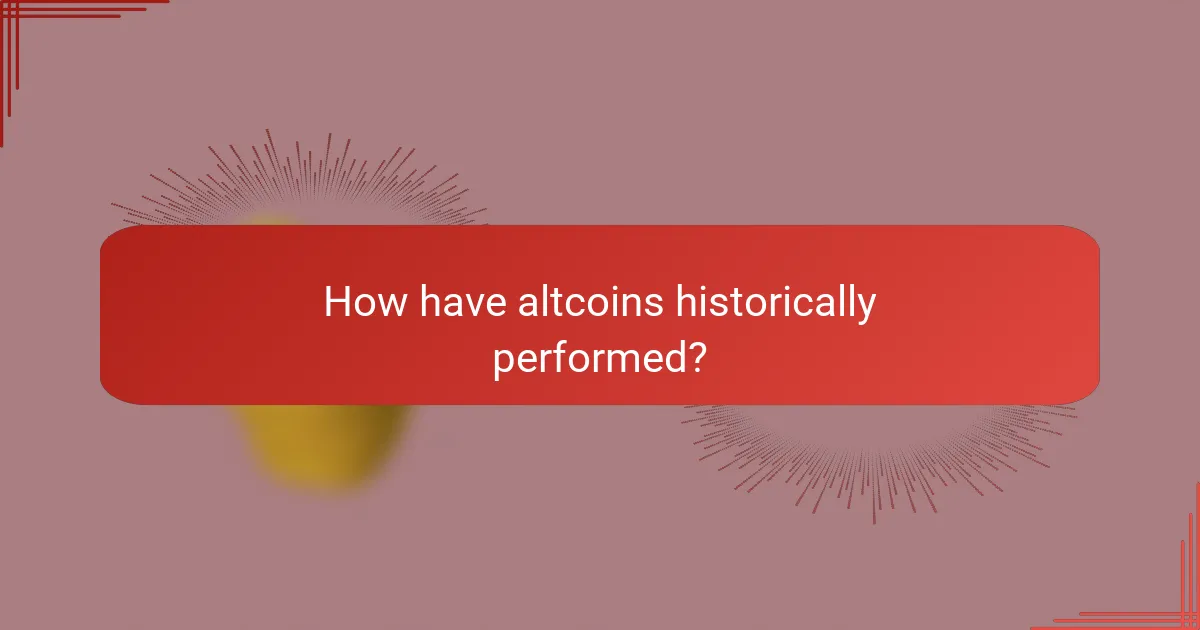
How have altcoins historically performed?
Altcoins have shown a wide range of historical performance, often characterized by significant volatility and rapid price changes. While some altcoins have achieved substantial gains, others have faced steep declines, making their historical performance a mixed bag for investors.
Historical price trends of altcoins
The price trends of altcoins have varied greatly over the years, often influenced by market sentiment, technological advancements, and regulatory developments. For instance, during major bull markets, many altcoins have experienced price surges, sometimes outperforming Bitcoin. Conversely, in bear markets, altcoins can suffer more severe losses than Bitcoin, reflecting their higher risk profile.
Investors should pay attention to historical price movements, as they can provide insights into potential future trends. Analyzing charts and price patterns can help identify periods of growth and decline, which may inform investment decisions.
Major altcoin market cycles
Altcoin market cycles typically align with the broader cryptocurrency market cycles, characterized by phases of accumulation, growth, and correction. During bull markets, altcoins often gain traction as investors seek alternatives to Bitcoin, leading to increased trading volumes and price appreciation.
In contrast, during market corrections, many altcoins may experience sharp declines, sometimes losing significant portions of their value. Understanding these cycles can help investors time their entries and exits more effectively, minimizing potential losses and maximizing gains.

What factors influence altcoin investment decisions?
Several key factors influence altcoin investment decisions, including market sentiment, technological advancements, and regulatory impacts. Understanding these elements can help investors make informed choices in the volatile altcoin market.
Market sentiment analysis
Market sentiment analysis involves gauging the overall mood of investors and traders towards altcoins. This can be influenced by news events, social media trends, and the performance of major cryptocurrencies like Bitcoin and Ethereum.
Investors should monitor sentiment indicators such as the Fear and Greed Index, which can provide insights into whether the market is overly optimistic or pessimistic. A shift in sentiment can lead to rapid price changes, making it crucial to stay updated on market trends.
Technological advancements in blockchain
Technological advancements in blockchain significantly impact altcoin investments. Innovations such as improved scalability, security features, and interoperability can enhance the utility and attractiveness of specific altcoins.
For example, altcoins that adopt proof-of-stake mechanisms or layer-2 solutions may offer better transaction speeds and lower fees. Investors should evaluate the technological roadmap of altcoins to assess their long-term viability and potential for growth.
Regulatory impacts on altcoin investments
Regulatory impacts play a crucial role in shaping altcoin investment decisions. Governments around the world are increasingly scrutinizing cryptocurrencies, which can lead to changes in legal status and taxation policies.
Investors should stay informed about regulations in their respective countries, as these can affect market access and investment strategies. For instance, stricter regulations in the EU or the US may lead to increased volatility or limit trading options for certain altcoins.
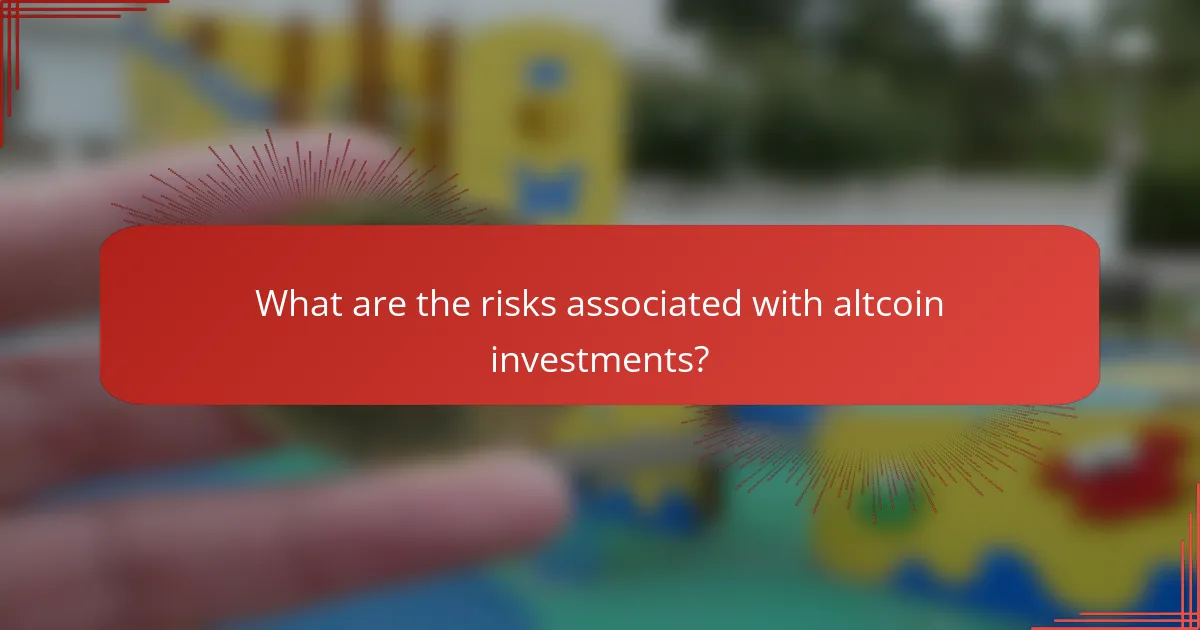
What are the risks associated with altcoin investments?
Altcoin investments carry several risks, including market volatility, security vulnerabilities, and regulatory uncertainties. Understanding these risks is crucial for making informed investment decisions.
Volatility in altcoin markets
Altcoin markets are known for their extreme volatility, often experiencing significant price fluctuations within short periods. This can lead to substantial gains but also considerable losses, making it essential for investors to be prepared for rapid changes.
Investors should consider setting stop-loss orders to mitigate potential losses and avoid panic selling during downturns. It’s advisable to invest only what you can afford to lose, as altcoin prices can swing dramatically, sometimes by tens of percent in a single day.
Security concerns with altcoin wallets
Security is a major concern when it comes to storing altcoins, as wallets can be vulnerable to hacks and theft. Hardware wallets are generally considered safer than software wallets, as they store private keys offline and are less susceptible to online threats.
Investors should use two-factor authentication and regularly update their wallet software to enhance security. Additionally, be cautious of phishing scams that attempt to steal your wallet credentials, and always verify the authenticity of wallet applications before downloading.
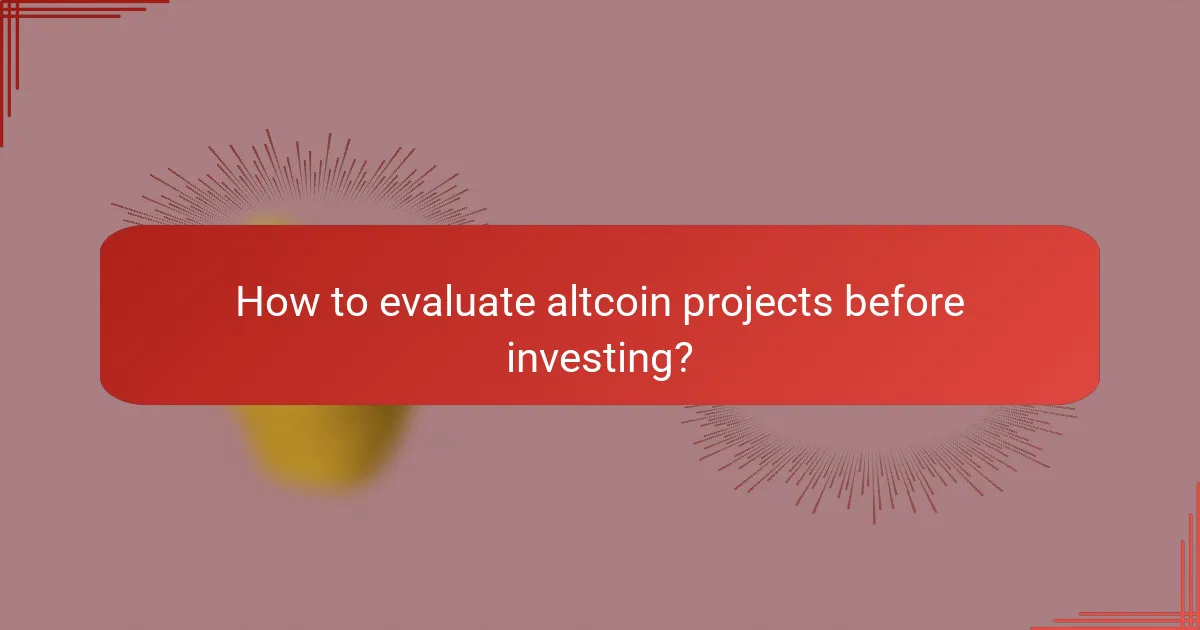
How to evaluate altcoin projects before investing?
To evaluate altcoin projects effectively, consider factors such as the development team, the project’s use case, and market trends. A thorough analysis can help you make informed investment decisions and mitigate risks.
Assessing the development team
The development team is crucial to the success of any altcoin project. Look for teams with a proven track record in blockchain technology or relevant fields, as well as transparency in their operations. Research their previous projects and community engagement to gauge their credibility.
Consider the size and diversity of the team; a larger team with varied expertise may be better equipped to handle challenges. Additionally, check for active communication channels, such as social media or forums, where the team shares updates and interacts with the community.
Understanding the use case of the altcoin
The use case defines the purpose and potential value of an altcoin. A strong use case addresses a specific problem or need in the market, making it more likely to gain traction. Evaluate whether the altcoin offers unique features or improvements over existing solutions.
Investigate the target audience and market demand for the altcoin’s application. Projects that serve a growing sector or have partnerships with established companies may have a higher chance of success. Always consider the competitive landscape to understand how the altcoin stands out.

What are the emerging trends in altcoin investments?
Emerging trends in altcoin investments include the rise of decentralized finance (DeFi), increased institutional interest, and the integration of non-fungible tokens (NFTs) into various platforms. Investors are increasingly looking for opportunities beyond Bitcoin and Ethereum, focusing on projects that offer innovative solutions and strong community support.
Decentralized finance (DeFi) growth
Decentralized finance (DeFi) is rapidly transforming the altcoin landscape by providing financial services without traditional intermediaries. This sector includes lending, borrowing, and trading platforms that operate on blockchain technology, allowing users to engage directly with their assets.
Investors should consider the potential risks and rewards associated with DeFi projects. While many have shown impressive returns, they can also be highly volatile and susceptible to smart contract vulnerabilities. It’s essential to conduct thorough research and assess the project’s fundamentals before investing.
To navigate DeFi investments effectively, focus on established protocols with strong security audits and active communities. Look for projects that offer clear use cases and sustainable tokenomics, as these factors can significantly influence long-term success. Avoid investing more than you can afford to lose, given the inherent risks in this rapidly evolving space.
